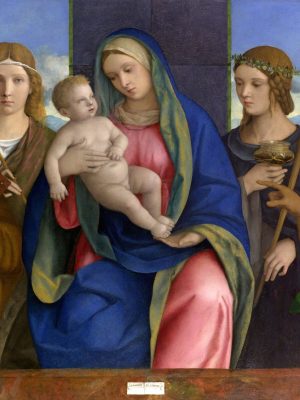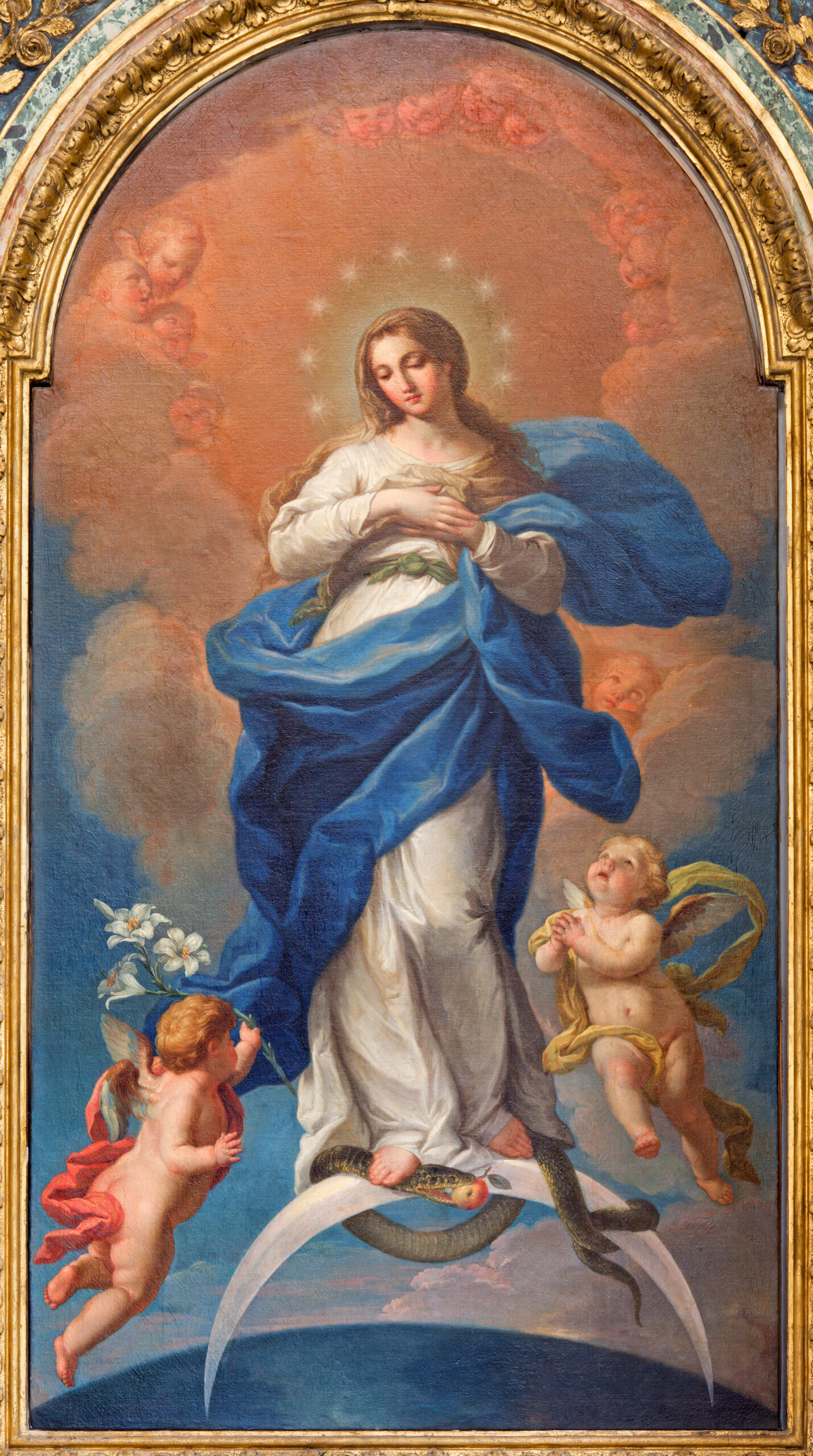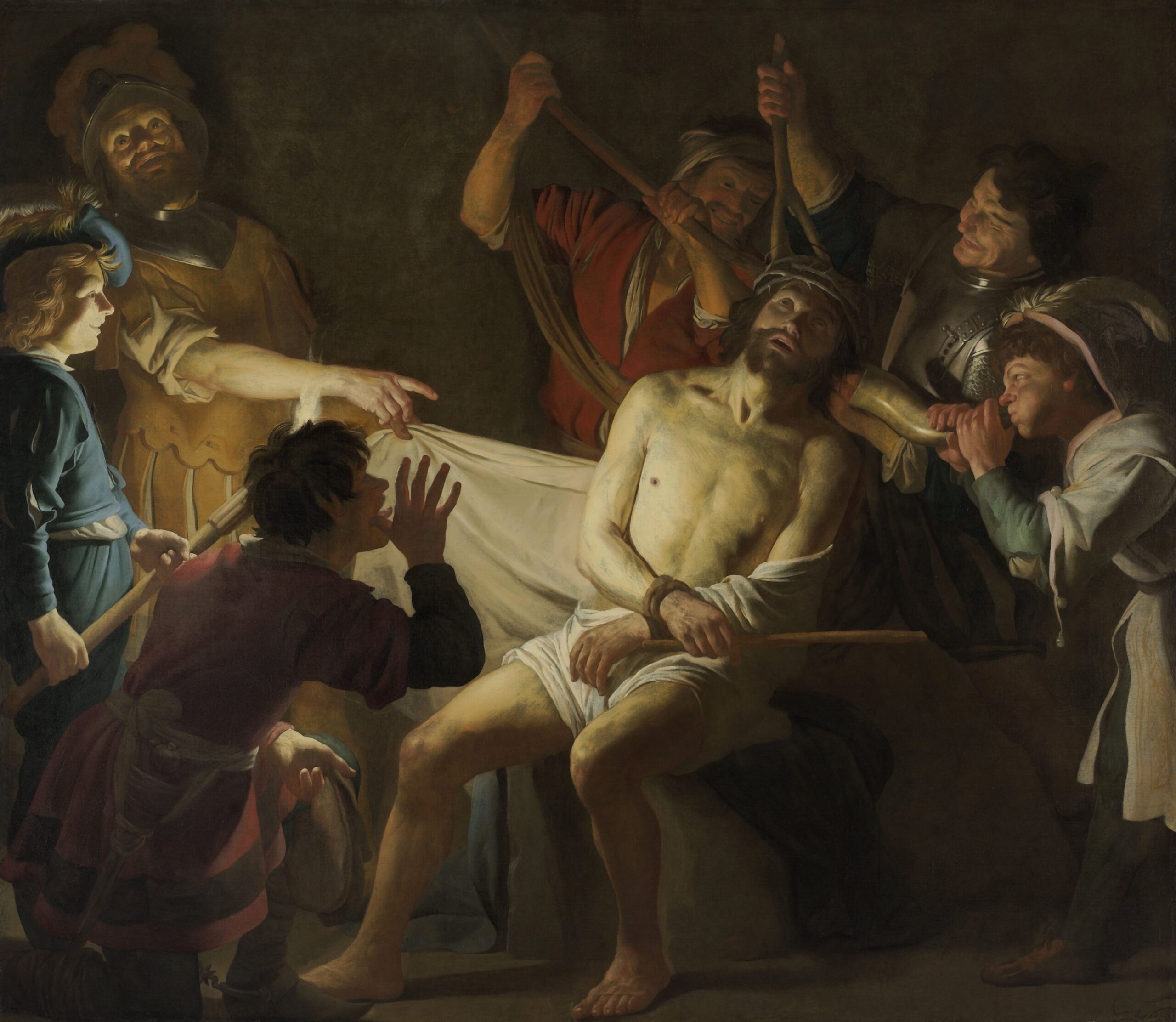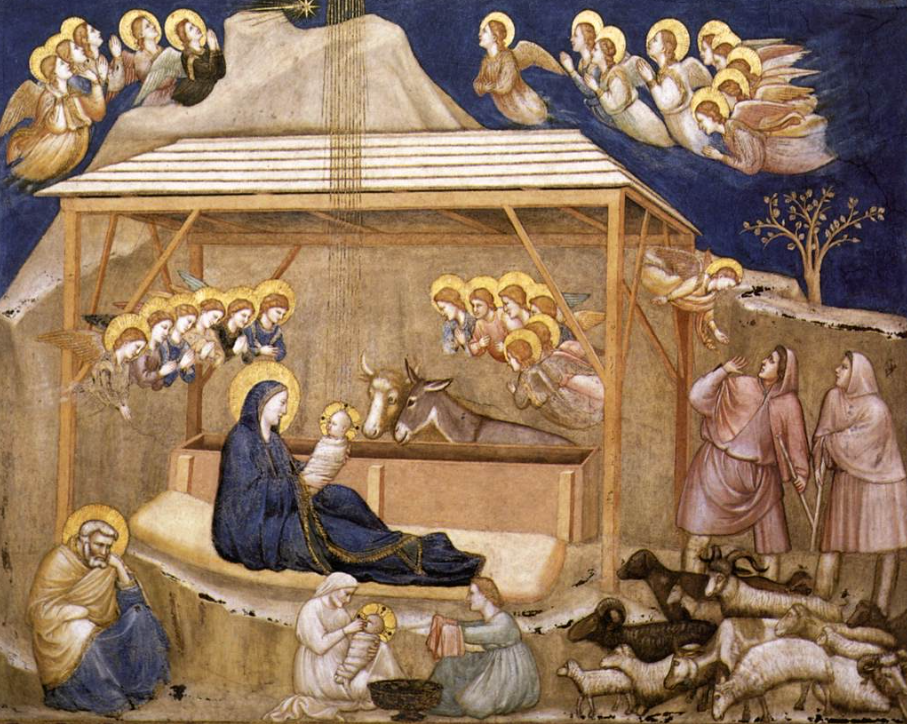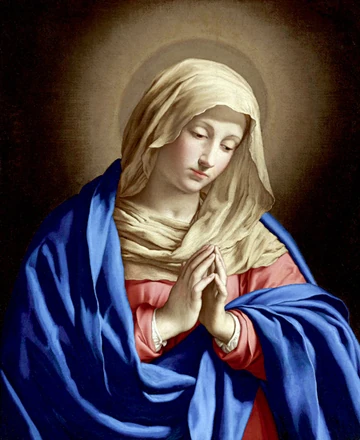“Hail, full of grace, the Lord is with thee: blessed art thou among women.”
-Archangel Gabriel (Luke 1:28)
The thought and history of the Blessed Mother in art is a magnificent subject that has enraptured Christians for over twenty centuries.
Art is inseparable from Mary and reflects the high place she holds in global world history. In art she appears as she is seen through the eyes of faith.
The Catholic Church extolls the greatness of Mary and her faithful find themselves beneficiaries of a long tradition as heirs of Marian art and its message – knowing that the kingdom of God is at hand and that we are not alone – we have a heavenly mother to accompany us on the journey.
This message of the announcement of the kingdom and Mary’s willingness to accompany us is enjoined with the language and purpose of the art, promised to all who are blessed to experience the centuries-old Catholic praxis of art and the Church’s ancient devotional life.
Influence of Mary on Art
Mary’s influence on art forever surpasses that of any other woman. She is the most sublime female character that was ever born and who has ever been depicted in art.
The contribution that Mary has brought to art history through the ages has been immense and indisputable. The works that depict Our Lady are like sermons and poems, lasting for centuries, reflecting truths of divine revelation and aspects of salvation history.
These works are part of a universal heritage of art that includes great masterpieces, works of outstanding artistry by acknowledged masters.
All the works found in Catholic churches in every corner of the world include pieces that depict Mary, providing food for thought and moments of meditation and inspiration that touch the higher nature of man. These works, great and lowly, strive to make permanent holy thoughts and divine realities.
Mary’s Role in History
Mary’s role is key in the history of civilization. She played no small part on the historical timeline where the Graeco-Roman world of paganism met Christianity and was redeemed and transformed by the Gospel, experiencing a transmutation into the flowering of what became the High Middle Ages of medieval Christianity.
With the coming of Christ the structure of pre-Christian civil society was recast, with the dignity of the human person raised to the forefront, leaving no place for lack of morals or the degradation of women.
The new Christian culture worked for an end to the age of cruel and oppressive despotism of the pagan world, replacing its disregard for the dignity of the human person with holy images in art.
In world history, Mary has been more than a symbol of beauty and holiness, she has been a force for great achievement. The world was thus transformed, through her example and high ideals. Christian morals, justice and charity flow from the personal example of Mary.
To be poor and humble, a woman, a single mother of a monotheistic God, a vessel of virginity, purity and love in the divine image – all this was a consummation that the pagan world could never have imagined.
The new social order that was thus ushered in with Christianity was purchased by the agonies of a long wait and struggle over the centuries. The new light of Christ and His Church was a positive step in human development that further brought with it a new-found freedom to depict so sublime a creature in art.
From the time the magnificence of the new Christian order dawned on the minds of men, they commenced at first slowly, to develop a theology of Mary, revealing her majestic presence in salvation history that led to her current place in art.
Oldest Image of Mary
The oldest known depiction of Mary is seen in a fresco image in the Roman catacombs of Priscilla on Rome’s Via Salaria dating from about 150 AD. This depiction is proof that artists were depicting the lineaments of Mary from an early time.
The love, veneration and praise for Jesus through Mary is seen clearly in the image. Our Lady is depicted seated with a halo and holding the infant babe in her arms. Proof that haltingly and timidly, Christian art was developing at that time, evidenced in this and other early images.
The earliest Christian images are found in the catacombs. They reflect what can best be described as a mixture of graffiti with other more serious images. This reflects the tributes of praise and glorification that poured fourth from the hearts of the earliest Christians while decorating the tombs of their loved ones.
The epithet of “pagan” has no application to the early Catholic communities that first produced these works of art. Although many of these earliest Christians were converts, they were thoroughly Christian.
Christianity at that time in the early centuries was finding new expression not only in theology, but also philosophy, poetry, architecture, music and painting. All of these are various forms of art. Visual art included the early creation of icons, described as “windows” to heaven and symbols of inspired piety.
All the arts were joining in a great chorus that developed into gradual and successive stages of art depicting Our Lady. Each century built upon the previous centuries, and from the twelfth to the fifteenth centuries they were blended into a triumphant crescendo of religious praise and adoration, with Mary in a prominent place next to Christ.
Mary in the High Middle Ages
These centuries are remembered preeminently as the period of the high Middle Ages, the time when the European content saw the highest flowering of Christianity, a time when art flourished and Christ ruled in the arts as in society itself.
To this day, love, veneration and praise for Christ the Son of Man implies also praise for his mother. Next to her Son, she is the chief actor in the scandal of the cross and its triumph, in the tragedy and triumph of the Redemption, the greatest story ever told.
With Mary a new vision of beauty dawned on the world. All nations of the world have laid tributes at her feet. To the people through the centuries she is “Our Lady,” “Mother of God,” “Queen of Heaven,” and among other titles, “Mother Most Holy.”
Medieval theologians found Mary prefigured in every part of the Old Testament. The poetry of the Middle Ages rang forth with her praises, like that of the poet Dante lamenting an insufficiency to express her perfections:
“I saw the Virgin smile, whose rapture shot
Joy through the eyes of all that blessed throng:
And even did the words that I possess
Equal imagination, I should not
Dare, the attempt her faintest charms to express.”
At the same time architecture attained its highest perfection in the cathedrals and churches built in her honor, and in their adornment with sculpture that recaptured ancient beauty.
In the thirteenth century it could be said that Catholic culture climaxed with an incredible display of art and devotion, that only continued to develop in the early and high Renaissance.
Mary in the Renaissance
Renaissance artists such as Fra Angelico, Lippi, Cimabue and Giotto depicted paintings of Mary that cause the very soul to cry out in jubilation. The legend of Fra Angelico comes to mind where it is said that while he slept, angels worked on his images in glorifying Mary.
The paintings of Fra Angelico, favorites of many, are on display at the Dominican convnet of San Marco in Florence, Italy where many countless tourists and art enthusiasts visit each year. Historians have elevated his works to a spirituality which many have suggested art has never excelled, creations of such tremendous mystical fervor and love.
The great Catholic artists of the centuries have worked for the greater glory of God, not for the glory of art. The best Catholic artists of the Renaissance were governed by religious faith and fervor while art was seen as a vehicle to religious contemplation.
In the words of Ruskin, the English art critic and philosopher, speaking of the time of Raphael: “In early times art was employed for the display of religious facts, now religious facts were employed for the display of art. The transition, though imperceptible, was consummate: it involved the entire destiny of painting. It passed from the paths of life to the paths of death.”
A New Renaissance of Art
In proportion as faith has grown dim in the modern era, the light has left the colors of much modern art that has been produced as fewer great Catholic artists exist.
Let us pray for a new renaissance that will revive the arts and bring back the religious quality of the past, producing images of Our Lady for a new generation that are both artistic and sacred. Art is forever the handmaid of the Catholic religion and there is more need today than ever for a renaissance of beauty in Catholic church decoration.
Great art does not die but has a rebirth in future generations that are led to appreciate it. Even though our age is tuned into the electronic hum of the screen, there is always hope.
Although technology governs our lives, it is not by technology alone that man lives. The technological world of today, like the world of science and progress in more recent centuries, has much to learn from Mary as a force superior to what is fleeting in this world. True art speaks a language that everyone can understand. It is what makes us see the image of the divine.
